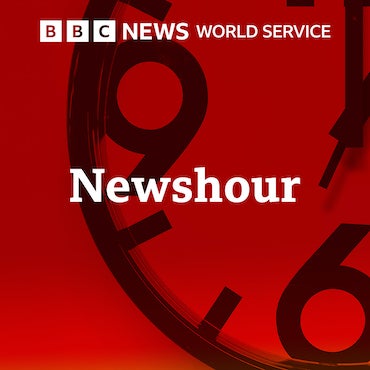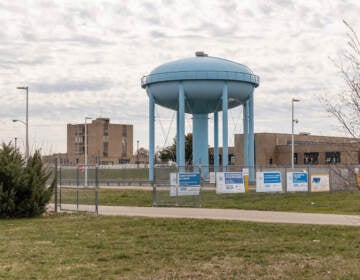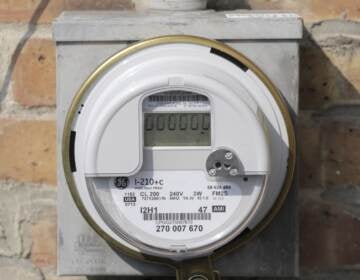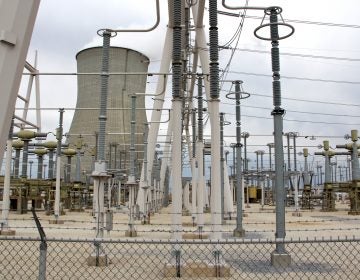New Jersey politicians, officials react to pending electric rate increase
Officials blame energy policy and the disconnect between demand and supply for the rate hike.
Listen 1:06
PJM Interconnection headquarters in Audubon, Pennsylvania (Marie Cusick/StateImpact Pennsylvania)
From Camden and Cherry Hill to Trenton and the Jersey Shore, what about life in New Jersey do you want WHYY News to cover? Let us know.
The hike in electricity rates announced by the New Jersey Board of Public Utilities last month sparked reactions from politicians and officials. The increase, which goes into effect June 1, is triggered by the state’s annual electricity auction for basic generation service.
The board said because of the auction’s outcome, electric bills for most customers serviced by the state’s four large companies will jump on an average by $20.
State Senate Minority Leader Anthony Bucco blamed Gov. Phil Murphy’s energy policy for the impending increase.
“All of these things place a huge demand on our electric supply,” he said. “When we can’t meet the demand, we have to buy on the grid, and when we have to buy on the grid, we are at the mercy of those selling us electricity.
Bucco, R-Morris, said that until officials and utility companies figure out how much energy can be produced in New Jersey, rates will continue to climb.
“Somebody’s got to go in there and figure out what the best mix is,” Bucco said. “Maybe you look at some nuclear as part of the portfolio … natural gas is a relatively clean burning fuel.”
The increase in electric bills is making affordability in the state even more elusive, AARP New Jersey State Director Chris Widelo said.
“We are hearing from our members around the state who are struggling with utility bills that are becoming more and more unaffordable,” he said. “More can and must be done to mitigate the financial strain caused by sky rocketing bills to protect the health and safety of all residents.”
According to the U.S. Energy Information Administration, New Jersey consumed 72.7 million megawatt hours of electricity, enough to power the state’s 3.5 million households twice over.
PJM Interconnection, the region’s electric grid manager, said in a statement to WHYY News that the rate increases are because of decreasing supply and increasing demand.
“New Jersey is already an intensive net importer of power, and will likely continue to be a net importer in the near future,” spokesman Jeffrey Shields said.
New Jersey does not have enough electricity to meet its needs
Shields said the power grid was preparing for an infusion of supply from offshore wind energy farms. But because of several factors, including Orsted’s exit from the state and President Donald Trump’s administration pausing most wind energy initiatives, that never materialized.
In recent years, power plants that could have filled the gap have shuttered. The last two coal-fired power plants in the state owned by Atlantic City Electric ceased operating in 2022. PSEG divested all of its fossil-fueled generating stations in 2023.
To lower electric bills, New Jersey needs more power plants
Shields said energy policy is a major factor contributing to the supply crunch. Gov. Murphy issued an executive order in 2023 to make electricity production in New Jersey fossil-free by 2035. The governor wants that goal codified in state law.
Shields referred to initiatives like phasing out fossil-fuel powered plants in the state constitution and other decarbonization policies that have reduced the amount of electricity available. He adds any additional power supply should work to lower prices in subsequent auctions and wholesale prices, Shields said.
State Sen. John Burzichelli said companies that are selling electricity are in “a catbird seat” as older plants that generate power have not been replaced by new ones.
“There’s more demand for electricity and there’s less generation being developed,” he said.
PJM is currently reviewing other sources of energy supply, but there will be no decision on any initiatives until 2026.
Doug O’Malley, state director of Environment New Jersey, said critics have labeled the PJM power grid “the worst in America” and described the process of getting more energy on to the PJM power grid as “a slow moving train wreck.”
“When we look at kind what we need to do to build a 21st century electric grid, PJM has been failing to meet the moment,” he said, adding that proposals have been submitted that would generate more than 150,000 megawatts of electricity for the grid — enough to supply 125 million homes — as of last summer. But only one project based in Maryland that generates one megawatt came online.
Senate Republicans called upon the regulator to “prioritize reliability and affordability.”
Burzichelli, D-Gloucester, introduced a resolution calling on the Board of Public Utilities to investigate PJM’s pricing model and to make reforms to reduce prices. He praised the technical operation of the grid operator.
“Our region is well served by them,” he said. “We don’t have brownouts, generally speaking.”
But he was also critical about their business acumen.
“I don’t know that they’re always savvy to having a sense of what’s happening in people’s homes and what this management of buying electricity means with regards to people’s ability to pay,” he said.

Get daily updates from WHYY News!
WHYY is your source for fact-based, in-depth journalism and information. As a nonprofit organization, we rely on financial support from readers like you. Please give today.






